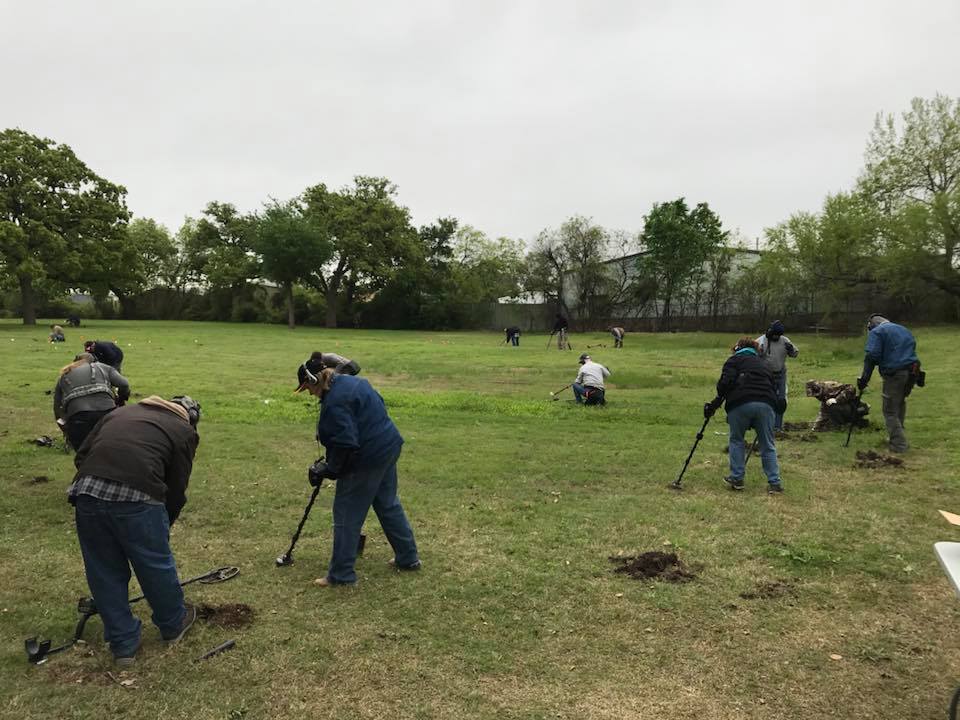
Metal detectorists search Dallas City Cemetery for buried graves (Photo by Daniel Babb).
When East Dallas neighbor Gary Buckner got the call from his fellow metal detectorists at Golden Triangle Metal Detectors to find hidden gravestones in a pauper’s cemetery in Northwest Dallas, he jumped at the opportunity.
Buckner is a member of a metal detector hobbyist group that often meets for searches, games and competitions. But on this day, he and 38 other detector-wielding friends headed out to an all but forgotten cemetery behind a warehouse at 10600 Shady Trail just north of Love Field Airport. On Sunday afternoon, they began to uncover paupers’ graves, many of them buried in more than a foot of sediment.

A gravestone buried in the dirt.
In 1932, the City of Dallas purchased land from another cemetery to form a pauper’s cemetery on what was then the outskirts of town, just south of Letot, Texas. Letot was an early settlement at the intersection of Lombardy and the Missouri, Kansas and Texas Railroad named for Clement Letot, a French Crimean War veteran (a story for another day). The cemetery served those who were too poor to have their remains buried elsewhere.
Now labeled City Pauper’s Cemetery, the first graves are from 1933. Those buried range from babies to elderly Dallasites born before the Civil War. Daniel Greig Babb was alerted to the graveyard when he received a message about locating it through his volunteer work with genealogy. He found the cemetery between warehouses, marked only by a small sign on Shady Trail. Lawn mowers had damaged many of the gravestones. Others were underwater in an area of the cemetery that didn’t drain well. Most were invisible.
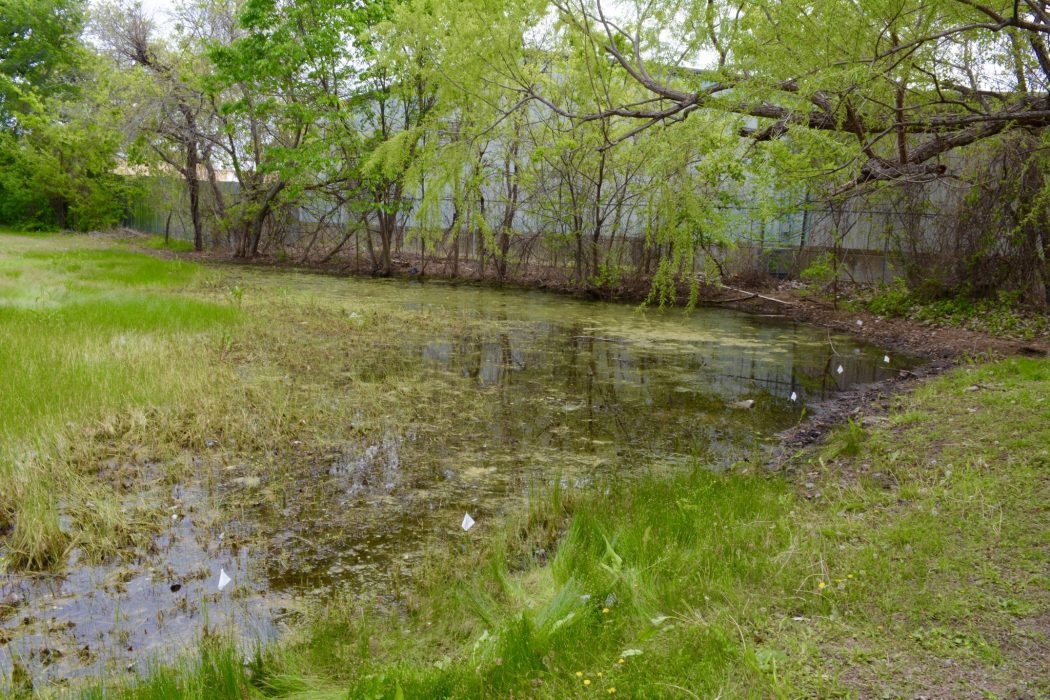
One corner of the graveyard doesn’t drain, flooding many graves.
He marked the graves that were visible on the surface, but he knew unearthing the graves would be a task beyond his abilities. So he called his friend Reggie Cusick, who is well-connected in the metal-detector community. Cusick rounded up a few dozen people, who began scouring the graveyard on Sunday.
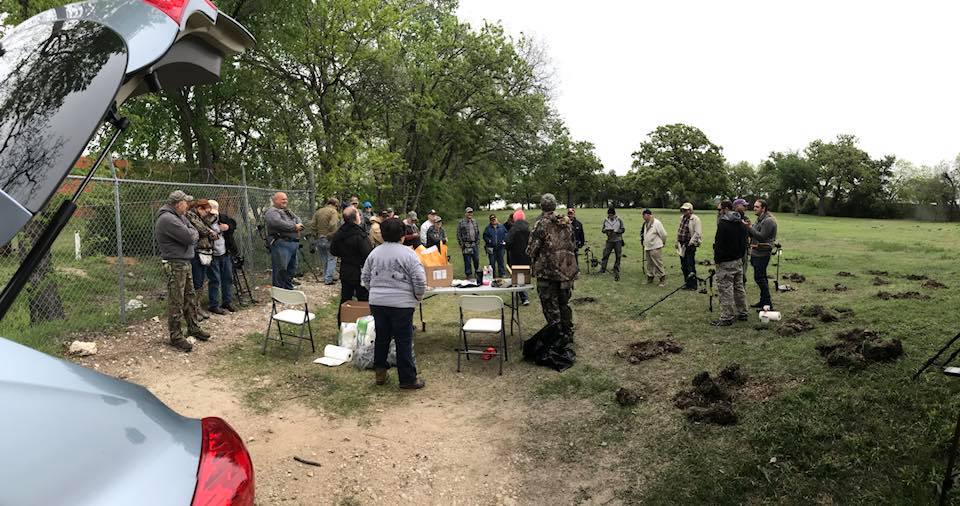
Metal detectorists gather to search Dallas City Cemetery for buried graves (photo by Daniel Babb).
The group helped mark, identify and unearth about 1,800 graves so far. Babb went to the public library to find the original map of the graveyard. He marked the sections as they had originally been labeled and helped organize the amateur detectives. They worked through the day, finding copper name plates with names and dates for the older graves and newer graves with just a last name etched into the metal.
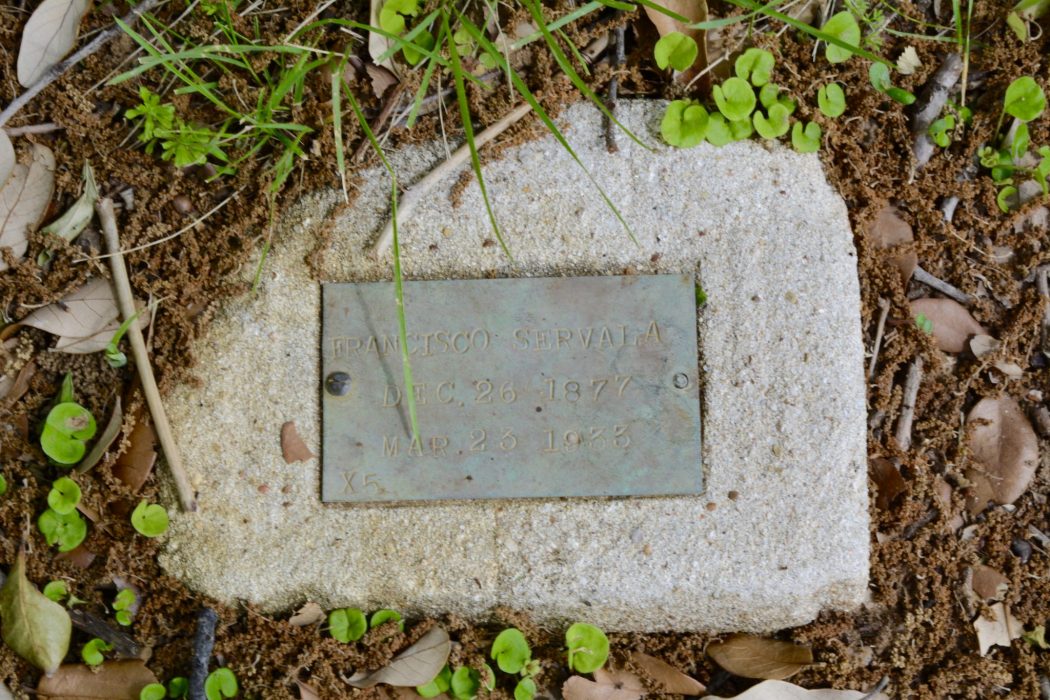
Some of the gravestones remained visible over the years.
A Dallas Morning News article from 1977 says that 2000 people are buried in the three-acre area. Burials ended in 1976 when the county took over pauper burials. In the story, a retired supervisor for the city’s health department remembered numerous burials with no family present at all. He said he always read from his prayer book as they were laid to rest.
Other articles noted how the seven unused acres of the cemetery were sold by the city. The stories depicted a much larger sign marking the area. But even in the 1970s, the articles described the cemetery as poorly maintained.
Babb has been working with the Park Department and Councilman Omar Narvaez, who has been receptive to restoring the graveyard and replacing the buried, damaged and old headstones with something more respectable. “Everyone deserves to have a decent burial,” Babb says.
Babb hopes to have the area restored so that the graves can have a marker and be mapped out. The original map shows sections, graves, with trees and even a driveway along the middle.
In order to do that, he needs the support of city government as well as other volunteer groups. He welcomes other metal detectorists to come out to the property, mark what they find and pass the information along to him. He created the “Gone But Not Forgotten” Facebook group where neighbors can get in touch to help rescue and restore the historic cemetery.
“If no one is concerned about the situation, nothing gets done,” Babb says.
Buckner, while at church Sunday night, was moved to tears as he thought of the poor children buried and forgotten there. Quoting the book of Luke, he read, “Whatever you did for the least of these, you did for me.”
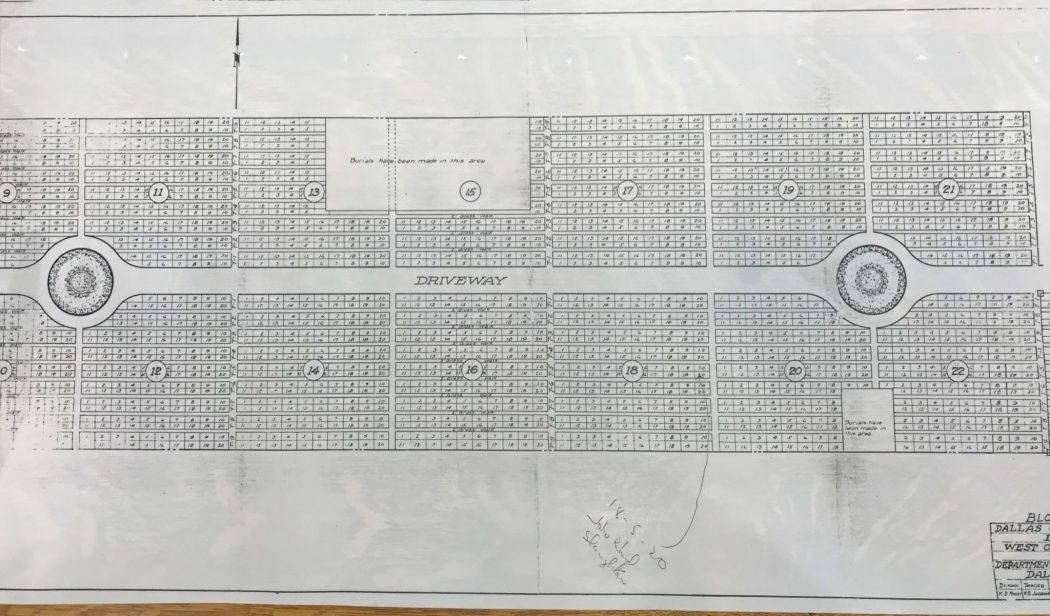
City of Dallas map of the cemetery’s sections and graves (map courtesy of the City of Dallas).





